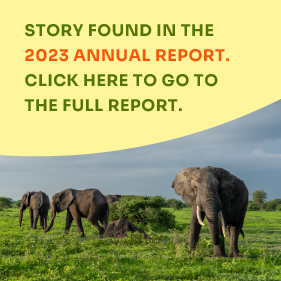Integrated Strategies in Action in Faro, Cameroon
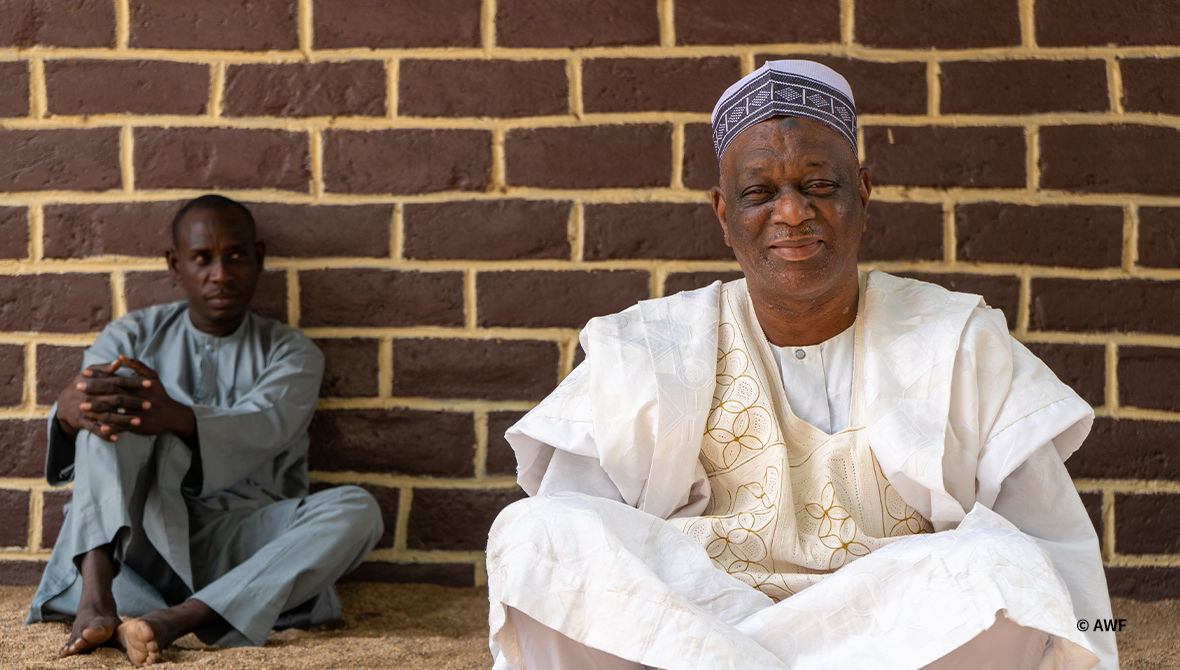
Local leaders in Faro, Cameroon, are negotiating space for wildlife, farming, livestock, and more.
Across the 14 landscapes where we work, the elements of our approach—leading for wildlife, living with wildlife, and caring for wildlife—complement each other. How they work together depends on the threats and pressures specific to each landscape.
In Cameroon’s Faro landscape, the emphasis has been on promoting security for wildlife by reducing poaching and putting in place the building blocks to invigorate an isolated and poorly resourced protected area. When secure, wildlife habitat will connect to a larger protected area network that stretches between northwestern Cameroon and eastern Nigeria.
Located in northern Cameroon and crossing into Nigeria, the Faro landscape provides critical habitat for savanna elephants and the largest hippo population in Central and West Africa. In FY23, AWF completed a five-year program supported by ECOFAC-6 to revive activities in a nearly abandoned protected area here, Cameroon’s Faro National Park. The park is part of a larger protected area complex that includes hunting zones and parks like Cameroon’s Bouba Njida and Bénoué and Nigeria’s Gashaka Gumti.
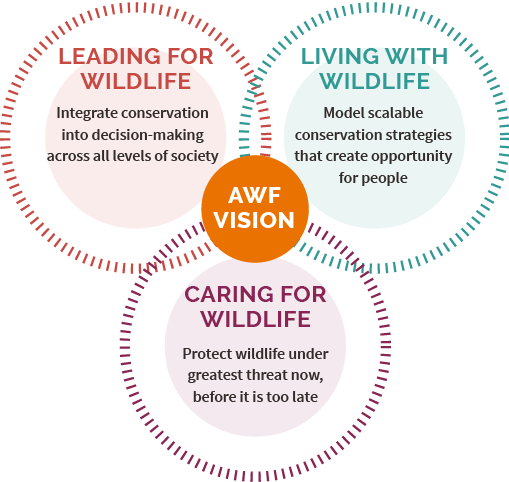
Faro National Park faces significant challenges that threaten not only wildlife but also the park’s connectivity to the larger protected area complex, and thus the greater ecosystem. They include commercial poaching, illegal fishing, and climate change impacts, including pressure from overgrazing by livestock. In addition, the lack of adequate roads and river crossings impedes rangers from keeping the park secure, both for wildlife that face commercial and bushmeat poaching and for herders and farmers who face armed raiders and kidnappers.
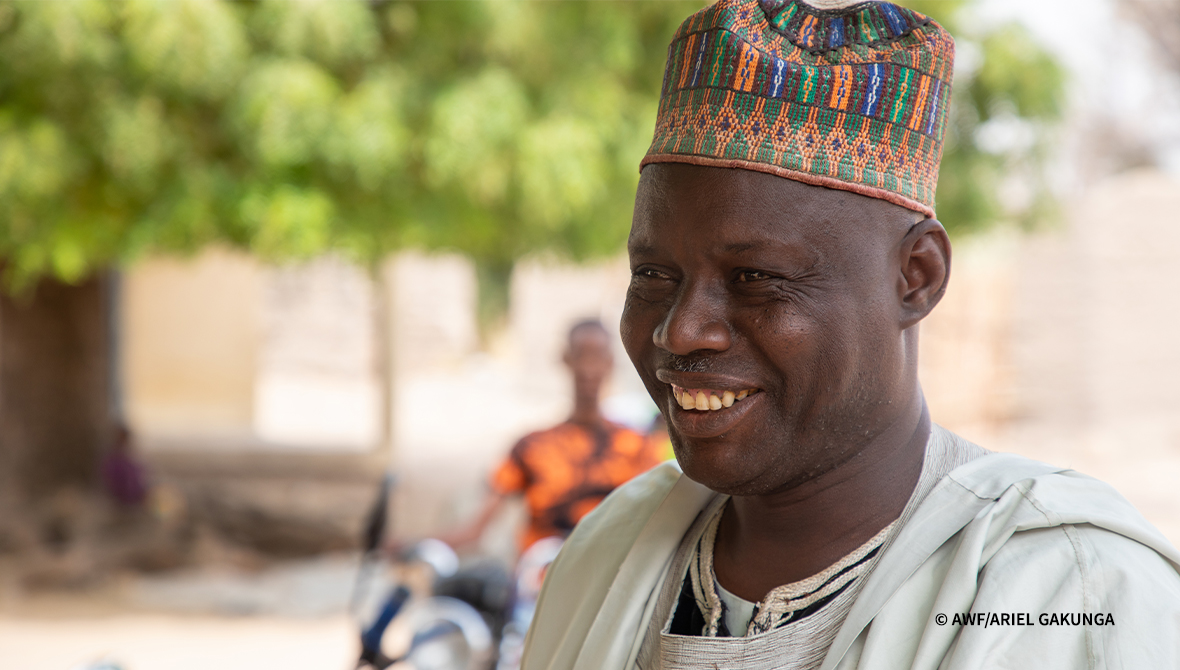
Mohamadou Ahmadou, pictured here, leads awareness campaigns to mitigate the impacts of overgrazing.
Leading for Wildlife
Seasonal livestock herding (technically known as transhumance) exerts pressure on wildlife habitat when cattle overgraze and herders cut trees. Climate change impacts and instability in the Sahel, the transition region between the Sahara Desert and the savannas of North-Central Africa, are pushing herders in the Nigerian part of the Sahel southwards into Faro, leading to conflict with local communities over natural resources.
In response, AWF helped establish an Association for Peaceful Management of Transhumance, or TANGO association, which is a community initiative that bridges the divide between local subsistence farmers, local authorities, and herders. The association is made up of cattle herders and local leaders chosen by fellow community members for their integrity, leadership abilities, and interest in maintaining biodiversity. TANGO teams deployed throughout the landscape help minimize the strain on natural resources and peacefully manage conflicts.
The program also brought together traditional leaders, local communities, administrative authorities, and herders on both sides of the Cameroon-Nigeria border for five conferences involving 450 participants to enable inclusive decision-making about land use and the peaceful management of herds moving across the border.
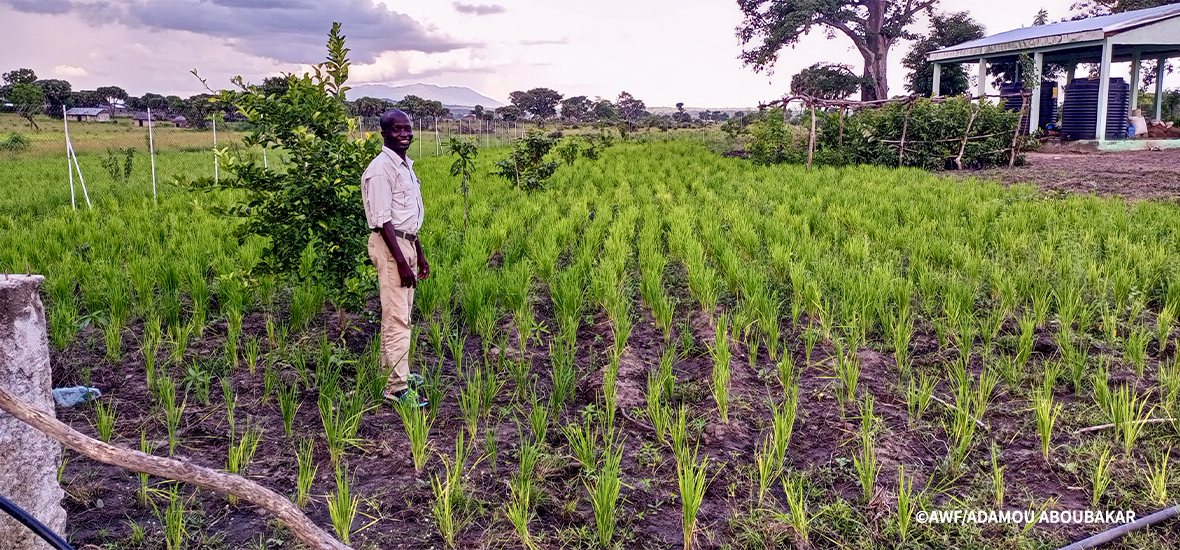
The Tchamba Rural Resources Center nurses plants to serve the community.
Living with Wildlife
In addition to TANGO, AWF deployed several community engagement strategies to help local communities see how conservation is connected to their well-being. This included organizing tree-planting days in schools and communities, where AWF distributed 8,000 tree seedlings to about 150 people. Grown locally in the Tchamba Rural Resources Center—which AWF helped establish in partnership with the World Agroforestry Center to meet rural farmers’ needs on land threatened by overuse—the indigenous seedlings included shade and food trees such as moringa, anacardium, mangifera, guava, pawpaw, and citrus. Besides their tangible benefits, the newly planted trees are a sign of the community’s enthusiasm for stewarding nature. To raise awareness for the value of wildlife specifically, in coordination with the tree planting days, AWF distributed 3,000 copies of a storybook of wildlife folk tales from the local Tchamba community, “Stories from Faro.” Alongside the folk tales, the book offers environmental education and paints a picture of wildlife as a part of local cultural heritage.
Finally, AWF helped community members establish beehives, which produced nearly 400 liters by the end of the project. We also distributed improved corn, millet, beans, and rice seeds, which local people are growing in the Tchamba Rural Resources Center, with plans to scale up the farming of these crops in the community to mitigate land degradation and produce more food per hectare of farmland.
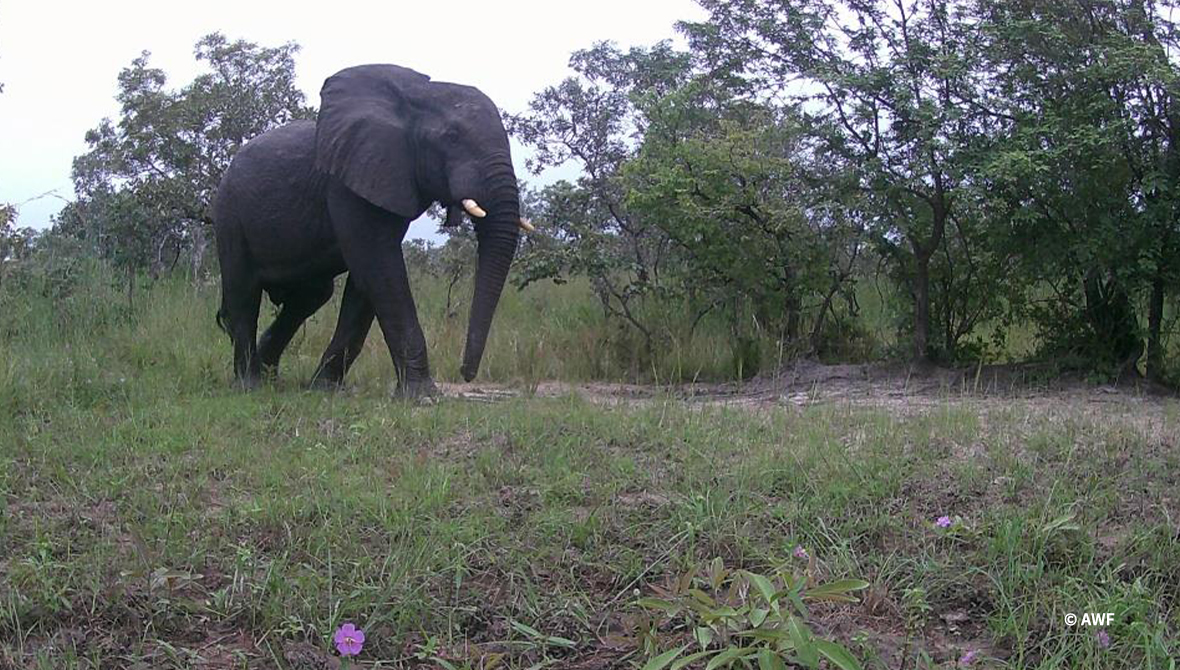
AWF uses camera traps to monitor elephants in Faro National Park, which is the last refuge for savanna elephants in northern Cameroon’s network of protected areas.
Caring for Wildlife
Maintaining the 344,249-hectare (an area a little more than two and a half times the size of Los Angeles) protected area in Faro National Park requires significant capacity from the Conservation Service of the Ministry of Forestry and Wildlife (MINFOF), Cameroon’s wildlife authority. During the program, AWF recruited, trained, and equipped eco-guards to support anti-poaching patrols. Patrols resulted in the arrest of 89 poachers and traffickers; the seizure of 74 weapons, 959 bullet rounds, and 551 traps; and the seizure of over 2,000 kilograms of wildlife products.
Dilapidated infrastructure posed major challenges to eco-guards in moving around the park. AWF worked to update the infrastructure in order to allow for better patrols, including rehabilitating 280 kilometers of roads in the park. In addition, we broke ground on a 900-meter airstrip to allow for faster travel in and out of the region. (By road, it can take up to 18 hours to travel to Faro National Park from Yaoundé, the closest major city.)
To create a baseline understanding of key wildlife populations in the park, AWF carried out two wildlife inventories in 2018 and 2021. These inventories provided essential data to inform conservation action in and around the protected area.
